In common emitter transistor as shown in Fig., the VBB supply can be varied from 0 V to 5.0V. The Si. Transistor has βac=250 and RB=100kΩ,Rc=1kΩ,VCC=5.0V. Assume that when the transistor is saturated, VCE=0V and VBE=0.8V. Calculate the minimum base current, for which the transistor will reach saturation. Hance, determine Vi when the transistor is 'switched on' find ranges of Vi for which the transistor is switched off and switched on.
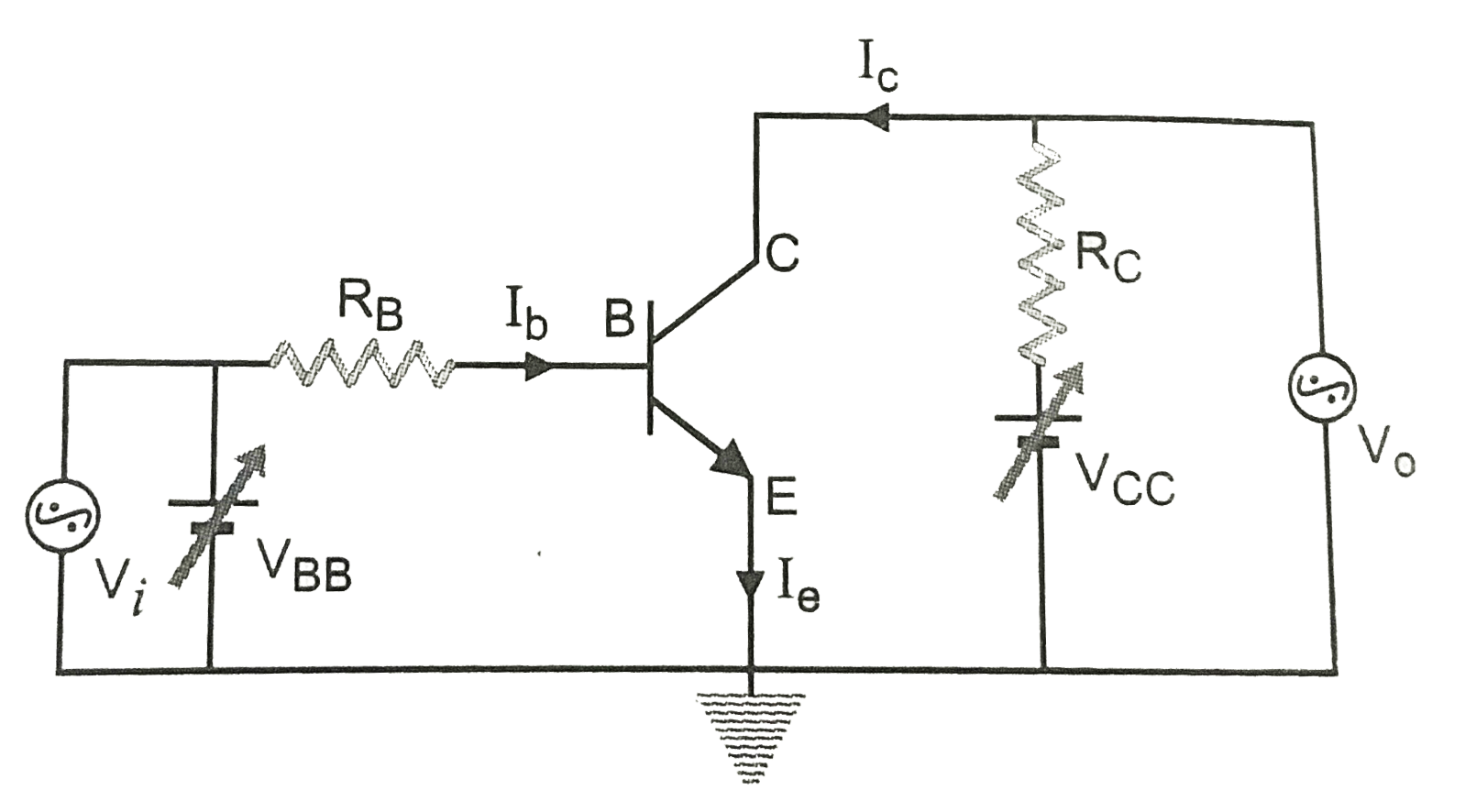
Here, at saturation,
VCE=0V,VBE=0.8V
As, VCE=VCC−IR_(L)
∴IC=VCCRC=5.0V1.0kΩ=5.0mA
As, β=IcIb
or Ib=Icβ=5.0mA250=20μA
The input voltage (Vi) in which the transistor will go into the saturation state is given by
VIH=V(BB)=IbRB+VBE
=20μA×100kΩ+0.8V=2.8V
We know that in case of Si transistor, as long as input VIL is less than 0.6V, the transistor will be in cut off state and current Ic will be zero. Therefore, the value of input voltage below which the transistor remain cut off is VIL=0.6V.
It means, the transistor will be in the 'switched off' state between the input voltage 0.0V to 0.6V and it will be in 'switch on' state batween the input voltage 2.8V to 5.0V.
Related Playlists
- BOOK - PRADEEPCHAPTER - ELECTRONIC DEVICESEXERCISE - SAMPLE PROBLEM2videos
ELECTRONIC DEVICES
- BOOK - PRADEEPCHAPTER - ELECTRONIC DEVICESEXERCISE - CONCEPTUAL PROBLEMS1videos
ELECTRONIC DEVICES
- BOOK - PRADEEPCHAPTER - ELECTROMAGNETIC WAVESEXERCISE - II Focus multiple choice question5videos
ELECTROMAGNETIC WAVES
- BOOK - PRADEEPCHAPTER - ELECTROSTATICSEXERCISE - ASSERTION-REASON TYPE QUESTIONS2videos
ELECTROSTATICS
Similar Practice Problems
- Question 1 - Select One

In the figure, given that VBB supply can vary from 0 to 5.0V,VC=5V,βdc=200,RB=100Kω,RC=1Kω and VBE=1.0V, The minimum base current and the input voltage at which the transistor will go to saturation, will be, respectively:A25μAand3.5VB20μAand3.5VC25μAand2.8VD20μAand2.8V - Question 1 - Select One

In the figure, given that VBB supply can vary from 0 to 5.0V,VC=5V,βdc=200,RB=100Kω,RC=1Kω and VBE=1.0V, The minimum base current and the input voltage at which the transistor will go to saturation, will be, respectively:A25μAand3.5VB20μAand3.5VC25μAand2.8VD20μAand2.8V - Question 1 - Select One or More
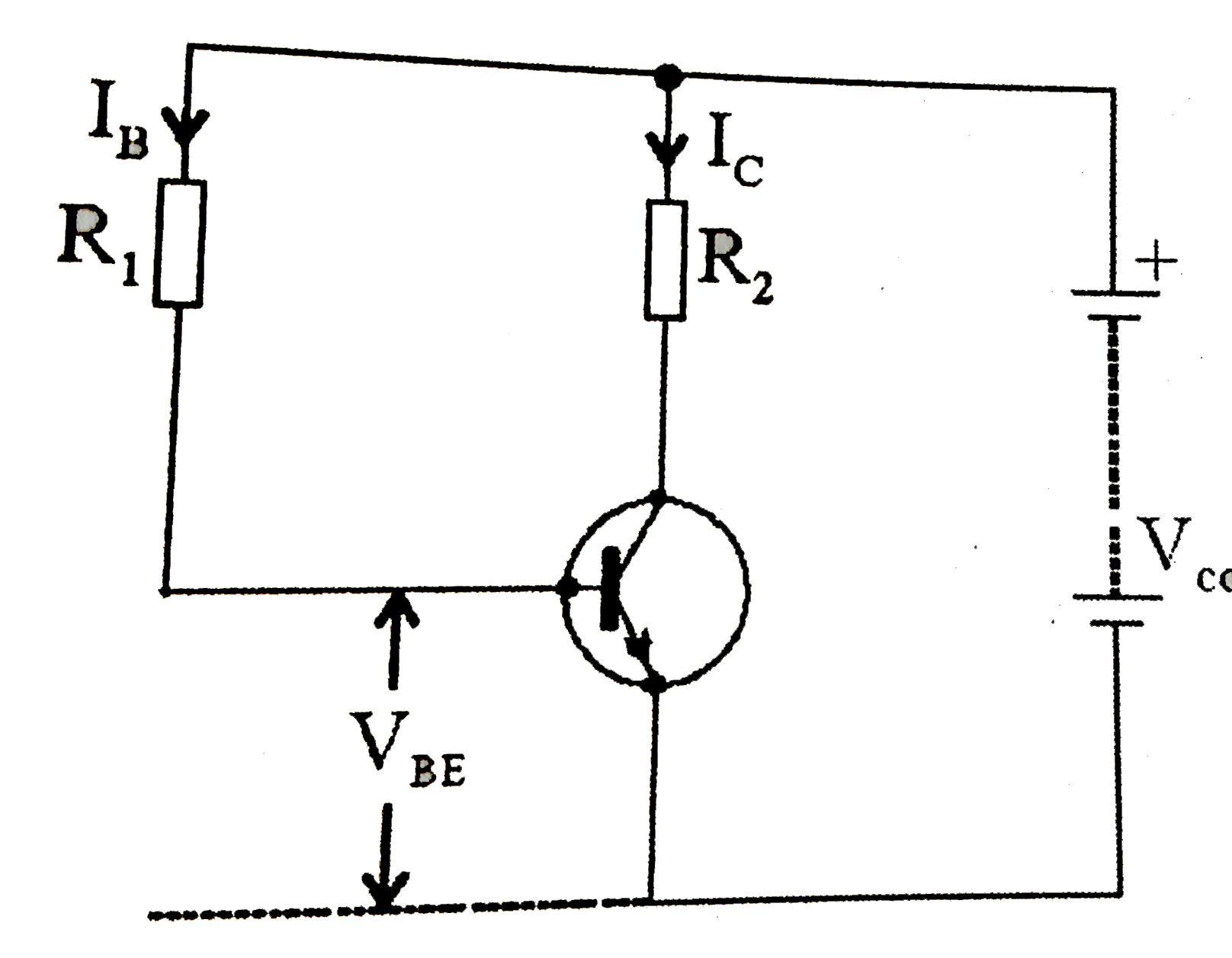
In the junction transistor voltage amplifier circuit of figure, if R1=100kΩ,R2=1kΩ,VCC=6.0V and VBE=0.6V current gain=60AIB=54μABIC=3.24mACthe voltage across R2=3.24VDthe voltage across the collector-emitter=3.24V - Question 1 - Select One
A common emitted amplifier circuit, built using an npn transistor, is shown in the figure. Its dc current gain is 250,RC=1Kω and VCC=10V. What is the minimum base current for VCE to reach saturation?
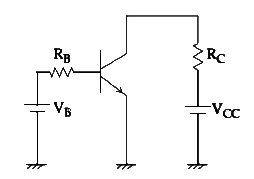 A10μAB100μAC7μAD10μA
A10μAB100μAC7μAD10μA - Question 1 - Select One
In the figure shown RB=500KΩ,RC=8KΩ,VBB=10.6V and VCC=20V. The current amplification factor of the transistor is 100 and VBE=0.6 volt then which of the following is false?
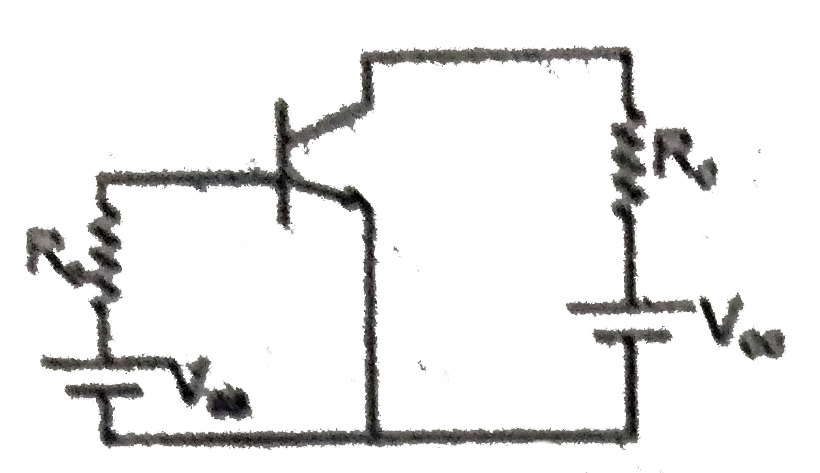 AIB=20μABVCB=3.4VCcurrent transfer ratio is 1.01Dcurrent transfer ratio is (100/101)
AIB=20μABVCB=3.4VCcurrent transfer ratio is 1.01Dcurrent transfer ratio is (100/101) - Question 1 - Select One
In the figure shown , RB=500kΩ,RC=8kΩ,VBB=10.6VandVCC=20V . The current amplification factor β=100andVBE=0.6 V . Mark the incorrect statement .
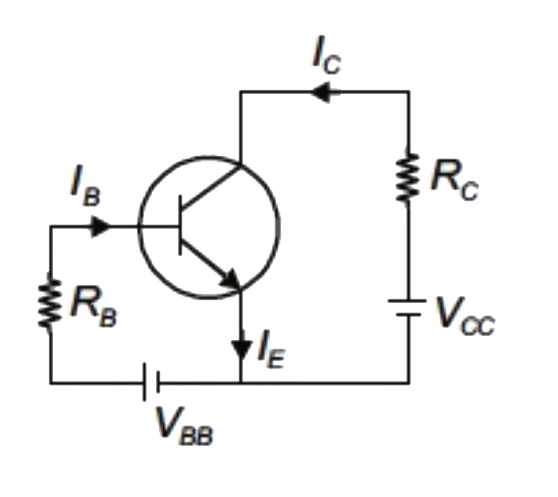 AIB=20μABVCB=3.4VCVCB=2.8VDthe transistor is in active region
AIB=20μABVCB=3.4VCVCB=2.8VDthe transistor is in active region
Similar Questions
In common emitter transistor as shown in Fig., the VBB supply can be varied from 0 V to 5.0V. The Si. Transistor has βac=250 and RB=100kΩ,Rc=1kΩ,VCC=5.0V. Assume that when the transistor is saturated, VCE=0V and VBE=0.8V. Calculate the minimum base current, for which the transistor will reach saturation. Hence, determine Vi when the transistor is 'switched on' find ranges of Vi for which the transistor is switched off and switched on.
 View Solution
View SolutionIn a common emitter transistor circuit, the base current is 40μA, then VBE is -
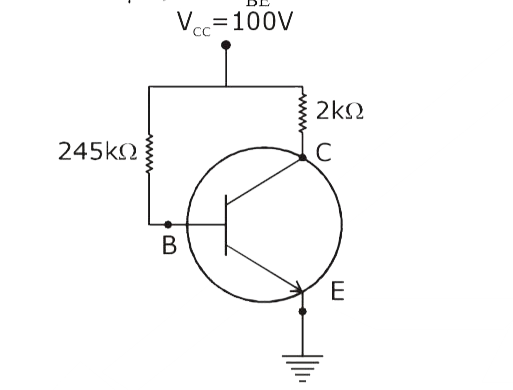 View Solution
View SolutionDraw the transfer characteristic curve of a base biased transistor in CE configuration. Explain clearly how the active region of the Vo versus Vi curve in a transistor is used as an amplifier.
View SolutionFrom the output characteristic shown in fig. calculate the value of current amplification factor of the transistor when VCE=2V.
View Solution

